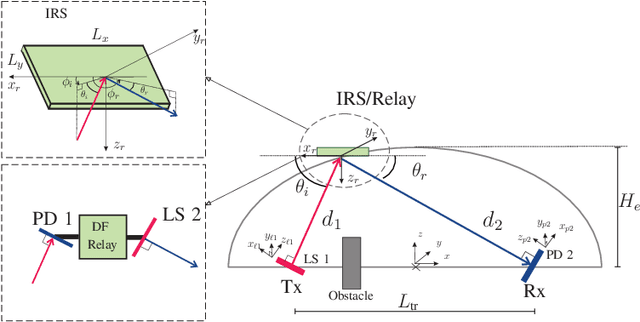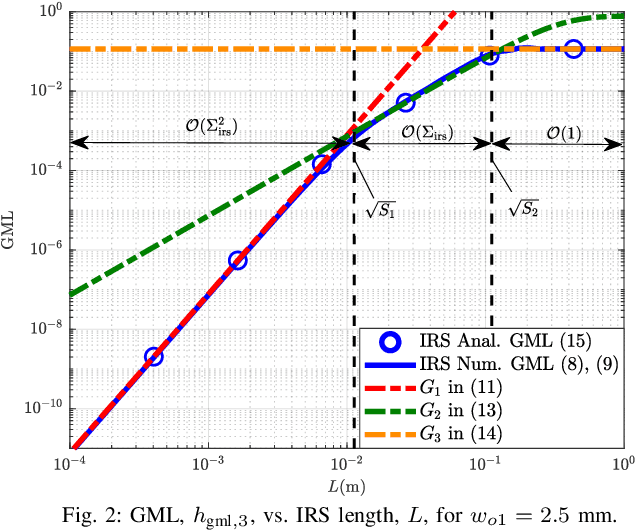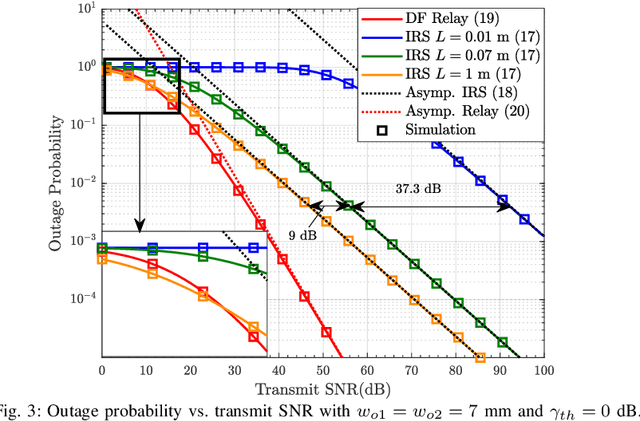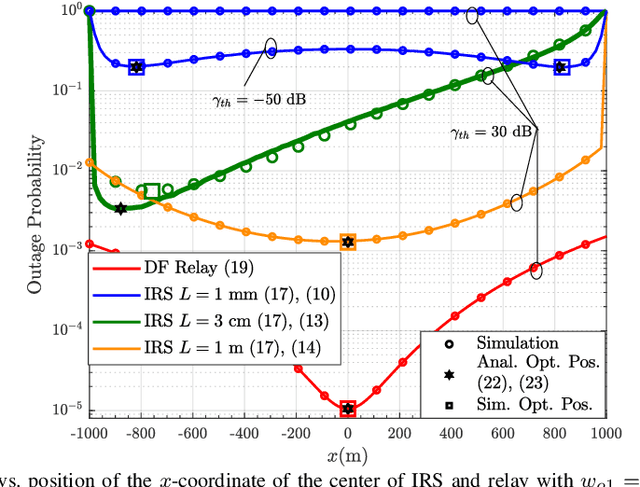Power Scaling Law for Optical IRSs and Comparison with Optical Relays
Paper and Code
May 05, 2022



The line-of-sight (LOS) requirement of free-space optical (FSO) systems can be relaxed by employing optical relays and optical intelligent reflecting surfaces (IRSs). Unlike radio frequency (RF) IRSs, which typically exhibit a quadratic power scaling law, the power reflected from FSO IRSs and collected at the receiver lens may scale quadratically or linearly with the IRS size or may even saturate at a constant value. We analyze the power scaling law for optical IRSs and unveil its dependence on the wavelength, transmitter (Tx)-to-IRS and IRS-to-receiver (Rx) distances, beam waist, and lens size. We compare optical IRSs in different power scaling regimes with optical relays in terms of the outage probability, diversity and coding gains, and optimal placement. Our results show that, at the expense of a higher hardware complexity, relay-assisted FSO links yield a better outage performance at high signal-to-noise-ratios (SNRs), but optical IRSs can achieve a higher performance at low SNRs. Moreover, while it is optimal to place relays equidistant from Tx and Rx, the optimal location of IRSs depends on the power scaling regime they operate in.
 Add to Chrome
Add to Chrome Add to Firefox
Add to Firefox Add to Edge
Add to Edge